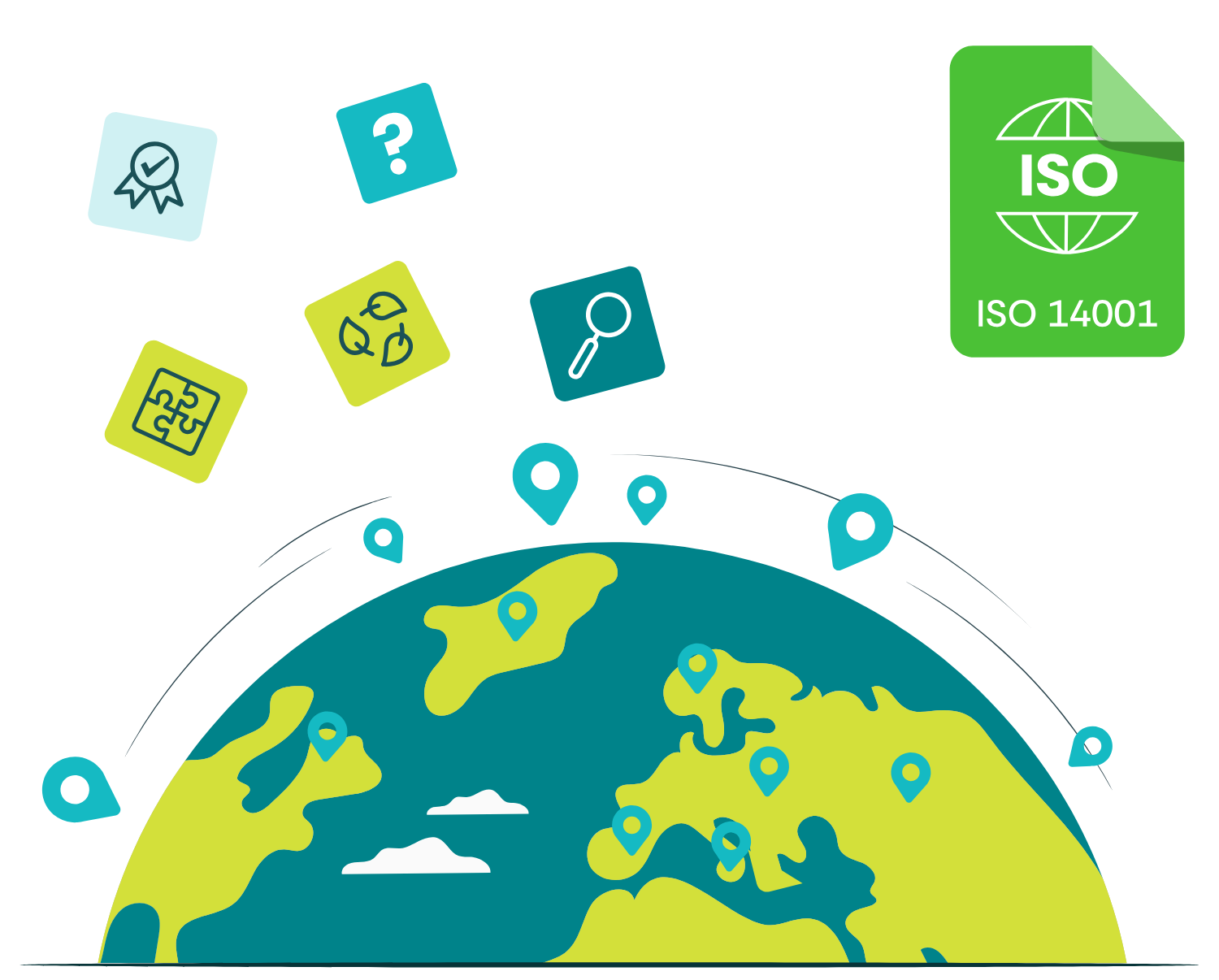Environmental Aspects and Impacts is a fundamental area of the ISO14001 standard. Essentially it is a complete assessment of all of your organisation’s processes, so can be quite a daunting task and one that can sometimes cause problems for organisations.
In this blog we explain what is meant by Environmental Aspects and Impacts, how to do an assessment and tips for creating an Environmental Aspects and Impacts Register.
What is meant by an Aspect and an Impact?
Within the ISO14001 standard, there is a requirement that all aspects that are found to be significant must be managed. So, what is an Aspect and an Impact?
An Aspect within ISO14001 is defined as an element of your organisation’s activities, products or services that can interact with the environment.
An Impact, again within ISO14001, is the change to the environment that the Aspect is determined to make. The change can be for the benefit or detriment of the environment and can be mild or severe depending upon the Aspect that has caused it.
How to do an Environmental Aspects and Impacts Assessment
There are many ways for evaluating the significance of an Aspect and what is significant for your organisation may not be significant for a similar organisation. The organisation needs to use a method that works for its specific requirements and circumstances, such as size, community it is in and the type of business sector you are in.
Where to start? First step is to list all your activities across the organisation. This includes everything from normal day to day running to annual activities or emergency activities. Once you have done this you can identify the potential areas of risk.
When assessing an Aspect you need to consider the following:
Normal working conditions
Abnormal working conditions
Emergencies or accidents
Current and past activities
Potential future activities
Every potential area of the Aspect must be assessed, as this will identify those areas, if any, that are potentially significant and which must be managed. For example, diesel generators:
Normal conditions – when running produce a steady noise aspect (x dBs), exhaust gases are released into the atmosphere but go through a scrubber
Abnormal working conditions – start-up, initial exhaust is considerably denser, and scrubbers only capture a percentage of the particles. Noise aspect is (x dBs) decreasing to (x dBs) when running steady
Emergency or accidents – potential fuel leak or oil leak could produce a ground contamination impact
Monthly testing – aspects the same as above
Potential future activities – none foreseen
Environmental Aspects that should be considered when completing the assessment include:
Emissions to the atmosphere
Releases to surface water (river, lakes, the sea)
Releases to ground water (underground water, i.e. the water table)
Use of water
Contamination of the land
Use of water
Use of raw material
Use of natural resources
The next step is to assess the Aspect that you have identified and define the Impacts that they make or may make. It is worth erring on the side of the worst possible impact. Although it is unlikely to happen, it will allow you to identify what you need to put in place to manage that Aspect to prevent such an Impact.
You may already have some existing controls in place that may prevent or mitigate the Aspect occurring and therefore prevent a significant impact. This could be ongoing training of staff, emergency equipment in place or active procedures followed closely.
As you define the impacts for each aspect, you should consider the following:
Existing controls
Severity of the impact
Frequency or probability of occurrence
Potential duration of the impact
Cost of changing the impact
Difficulty of changing the impact
The effects of change to the impact across the organisation’s other processes and activities
Effect on public image
The potential regulatory or legal exposure
Environmental Aspects and Impacts Register
Once you have completed your assessment of the identified Aspects and determined the potential Impacts for each Aspect, you need to rate each as to their significance. A register of significant environmental Aspects and associated Impacts must be maintained as documented information, especially if you wish to attain ISO14001 Environmental Management certification.
This register must be kept up to date, especially when new activities or products are added to the organisation’s business, or when an environmental incident has occurred. It must be reviewed on a regular basis to ensure that all Aspects and Impacts are still relevant and that the controls in place are still adequate.
The Aspects and Impacts register should include at least the following:
All inputs to the organisation’s activities, products, or processes
All outputs to the organisation’s activities, products, or processes
All direct and indirect air emissions from activities, products, or processes
All controlled and uncontrolled effluents from the organisation’s activities, products, or processes
The generation and disposal of solid or other waste associated with the organisation’s activities, products, or processes
All uses of raw materials and natural resources associated with the organisation’s activities, products, and processes
All other discharges or emissions, such as heat, energy, noise, odour, dust, vibration, or visual impact, associated with the organisation’s activities, products, and processes
All environmental issues of local or community relevance associated with the organisation and its environmental performance
You can find more details about Environmental Aspects and Impacts in our ISO14001:2015 toolkit, including this Environmental Aspects and Impacts Processes sample document which defines the process when completing an assessment.
Although an Impact and Aspect assessment is a daunting task, it is key to passing the ISO14001:2015 Certification Audit and the results will have a positive impact on the organisation, it’s environment and neighbours. Even if you aren’t looking to implement the ISO14001 Environmental Management System, but just want to implement some environmental activities, then an Aspects and Impacts assessment is worthwhile too.






